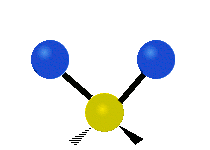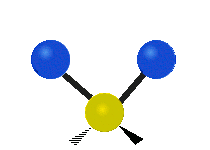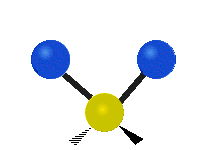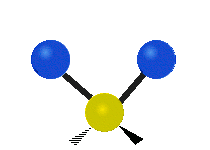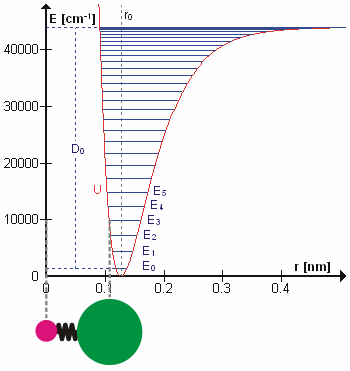The Planck constant, or Planck's constant, is the quantum of electromagnetic action that relates a photon's energy to its frequency. The Planck constant multiplied by a photon's frequency is equal to a photon's energy. The Planck constant is a fundamental physical constant denoted as , and of fundamental importance in quantum mechanics. In metrology it is used to define the kilogram in SI units.
The Planck constant is defined to have the exact value 6.62607015×10−34 J⋅s in SI units.
At the end of the 19th century, accurate measurements of the spectrum of black body radiation existed, but predictions of the frequency distribution of the radiation by then-existing theories diverged significantly at higher frequencies. In 1900, Max Planck empirically derived a formula for the observed spectrum. He assumed a hypothetical electrically charged oscillator in a cavity that contained black-body radiation could only change its energy in a minimal increment, , that was proportional to the frequency of its associated electromagnetic wave. He was able to calculate the proportionality constant, , from the experimental measurements, and that constant is named in his honor. In 1905, the value was associated by Albert Einstein with a "quantum" or minimal element of the energy of the electromagnetic wave itself. The light quantum behaved in some respects as an electrically neutral particle. It was eventually called a photon. Max Planck received the 1918 Nobel Prize in Physics "in recognition of the services he rendered to the advancement of Physics by his discovery of energy quanta".
Confusion can arise when dealing with frequency or the Planck constant because the units of angular measure (cycle or radian) are omitted in SI. In the language of quantity calculus, the expression for the value of the Planck constant, or a frequency, is the product of a numerical value and a unit of measurement. The symbol f (or ν), when used for the value of a frequency, implies cycles per second or hertz as the unit. When the symbol ω is used for the frequency's value it implies radians per second as the unit. The numerical values of these two ways of expressing the frequency have a ratio of 2π. Omitting the units of angular measure "cycle" and "radian" can lead to an error of 2π. A similar state of affairs occurs for the Planck constant. The symbol h is used to express the value of the Planck constant in J⋅s/cycle, and the symbol ħ ("h-bar") is used to express its value in J⋅s/radian. Both represent the value of the Planck constant, but, as discussed below, their numerical values have a ratio of 2π. In this Wikipedia article the word "value" as used in the tables means "numerical value", and the equations involving the Planck constant and/or frequency actually involve their numerical values using the appropriate implied units. The distinction between "value" and "numerical value" as it applies to frequency and the Planck constant is explained in more detail in this pdf file.
Since energy and mass are equivalent, the Planck constant also relates mass to frequency.
Origin of the constant
Planck's constant was formulated as part of Max Planck's successful effort to produce a mathematical expression that accurately predicted the observed spectral distribution of thermal radiation from a closed furnace (black-body radiation). This mathematical expression is now known as Planck's law.
In the last years of the 19th century, Max Planck was investigating the problem of black-body radiation first posed by Kirchhoff some 40 years earlier. Every physical body spontaneously and continuously emits electromagnetic radiation. There was no expression or explanation for the overall shape of the observed emission spectrum. At the time, Wien's law fit the data for short wavelengths and high temperatures, but failed for long wavelengths. Also around this time, but unknown to Planck, Lord Rayleigh had derived theoretically a formula, now known as the Rayleigh–Jeans law, that could reasonably predict long wavelengths but failed dramatically at short wavelengths.
Approaching this problem, Planck hypothesized that the equations of motion for light describe a set of harmonic oscillators, one for each possible frequency. He examined how the entropy of the oscillators varied with the temperature of the body, trying to match Wien's law, and was able to derive an approximate mathematical function for the black-body spectrum, which gave a simple empirical formula for long wavelengths.
Planck tried to find a mathematical expression that could reproduce Wien's law (for short wavelengths) and the empirical formula (for long wavelengths). This expression included a constant, , which subsequently became known as the Planck Constant. The expression formulated by Planck showed that the spectral radiance of a body for frequency ν at absolute temperature T is given by
where is the Boltzmann constant, is the Planck constant, and is the speed of light in the medium, whether material or vacuum.
The spectral radiance of a body, , describes the amount of energy it emits at different radiation frequencies. It is the power emitted per unit area of the body, per unit solid angle of emission, per unit frequency. The spectral radiance can also be expressed per unit wavelength instead of per unit frequency. In this case, it is given by
showing how radiated energy emitted at shorter wavelengths increases more rapidly with temperature than energy emitted at longer wavelengths.
Planck's law may also be expressed in other terms, such as the number of photons emitted at a certain wavelength, or the energy density in a volume of radiation. The SI units of are W·sr−1·m−2·Hz−1, while those of are W·sr−1·m−3.
Planck soon realized that his solution was not unique. There were several different solutions, each of which gave a different value for the entropy of the oscillators. To save his theory, Planck resorted to using the then-controversial theory of statistical mechanics, which he described as "an act of despair … I was ready to sacrifice any of my previous convictions about physics." One of his new boundary conditions was
to interpret UN [the vibrational energy of N oscillators] not as a continuous, infinitely divisible quantity, but as a discrete quantity composed of an integral number of finite equal parts. Let us call each such part the energy element ε;
— Planck, On the Law of Distribution of Energy in the Normal Spectrum
With this new condition, Planck had imposed the quantization of the energy of the oscillators, "a purely formal assumption … actually I did not think much about it…" in his own words, but one that would revolutionize physics. Applying this new approach to Wien's displacement law showed that the "energy element" must be proportional to the frequency of the oscillator, the first version of what is now sometimes termed the "Planck–Einstein relation":
Planck was able to calculate the value of from experimental data on black-body radiation: his result, 6.55×10−34 J⋅s, is within 1.2% of the currently accepted value. He also made the first determination of the Boltzmann constant from the same data and theory.
Development and application
The black-body problem was revisited in 1905, when Rayleigh and Jeans (on the one hand) and Einstein (on the other hand) independently proved that classical electromagnetism could never account for the observed spectrum. These proofs are commonly known as the "ultraviolet catastrophe", a name coined by Paul Ehrenfest in 1911. They contributed greatly (along with Einstein's work on the photoelectric effect) in convincing physicists that Planck's postulate of quantized energy levels was more than a mere mathematical formalism. The first Solvay Conference in 1911 was devoted to "the theory of radiation and quanta".
Photoelectric effect
The photoelectric effect is the emission of electrons (called "photoelectrons") from a surface when light is shone on it. It was first observed by Alexandre Edmond Becquerel in 1839, although credit is usually reserved for Heinrich Hertz, who published the first thorough investigation in 1887. Another particularly thorough investigation was published by Philipp Lenard in 1902. Einstein's 1905 paper discussing the effect in terms of light quanta would earn him the Nobel Prize in 1921, after his predictions had been confirmed by the experimental work of Robert Andrews Millikan. The Nobel committee awarded the prize for his work on the photo-electric effect, rather than relativity, both because of a bias against purely theoretical physics not grounded in discovery or experiment, and dissent amongst its members as to the actual proof that relativity was real.
Before Einstein's paper, electromagnetic radiation such as visible light was considered to behave as a wave: hence the use of the terms "frequency" and "wavelength" to characterize different types of radiation. The energy transferred by a wave in a given time is called its intensity. The light from a theatre spotlight is more intense than the light from a domestic lightbulb; that is to say that the spotlight gives out more energy per unit time and per unit space (and hence consumes more electricity) than the ordinary bulb, even though the color of the light might be very similar. Other waves, such as sound or the waves crashing against a seafront, also have their intensity. However, the energy account of the photoelectric effect didn't seem to agree with the wave description of light.
The "photoelectrons" emitted as a result of the photoelectric effect have a certain kinetic energy, which can be measured. This kinetic energy (for each photoelectron) is independent of the intensity of the light, but depends linearly on the frequency; and if the frequency is too low (corresponding to a photon energy that is less than the work function of the material), no photoelectrons are emitted at all, unless a plurality of photons, whose energetic sum is greater than the energy of the photoelectrons, acts virtually simultaneously (multiphoton effect). Assuming the frequency is high enough to cause the photoelectric effect, a rise in intensity of the light source causes more photoelectrons to be emitted with the same kinetic energy, rather than the same number of photoelectrons to be emitted with higher kinetic energy.
Einstein's explanation for these observations was that light itself is quantized; that the energy of light is not transferred continuously as in a classical wave, but only in small "packets" or quanta. The size of these "packets" of energy, which would later be named photons, was to be the same as Planck's "energy element", giving the modern version of the Planck–Einstein relation:
Einstein's postulate was later proven experimentally: the constant of proportionality between the frequency of incident light and the kinetic energy of photoelectrons was shown to be equal to the Planck constant .
Atomic structure
Niels Bohr introduced the first quantized model of the atom in 1913, in an attempt to overcome a major shortcoming of Rutherford's classical model. In classical electrodynamics, a charge moving in a circle should radiate electromagnetic radiation. If that charge were to be an electron orbiting a nucleus, the radiation would cause it to lose energy and spiral down into the nucleus. Bohr solved this paradox with explicit reference to Planck's work: an electron in a Bohr atom could only have certain defined energies
where is the speed of light in vacuum, is an experimentally determined constant (the Rydberg constant) and . Once the electron reached the lowest energy level (), it could not get any closer to the nucleus (lower energy). This approach also allowed Bohr to account for the Rydberg formula, an empirical description of the atomic spectrum of hydrogen, and to account for the value of the Rydberg constant in terms of other fundamental constants.
Bohr also introduced the quantity , now known as the reduced Planck constant, as the quantum of angular momentum. At first, Bohr thought that this was the angular momentum of each electron in an atom: this proved incorrect and, despite developments by Sommerfeld and others, an accurate description of the electron angular momentum proved beyond the Bohr model. The correct quantization rules for electrons – in which the energy reduces to the Bohr model equation in the case of the hydrogen atom – were given by Heisenberg's matrix mechanics in 1925 and the Schrödinger wave equation in 1926: the reduced Planck constant remains the fundamental quantum of angular momentum. In modern terms, if is the total angular momentum of a system with rotational invariance, and the angular momentum measured along any given direction, these quantities can only take on the values
Uncertainty principle
The Planck constant also occurs in statements of Werner Heisenberg's uncertainty principle. Given numerous particles prepared in the same state, the uncertainty in their position, , and the uncertainty in their momentum, , obey
where the uncertainty is given as the standard deviation of the measured value from its expected value. There are several other such pairs of physically measurable conjugate variables which obey a similar rule. One example is time vs. energy. The inverse relationship between the uncertainty of the two conjugate variables forces a tradeoff in quantum experiments, as measuring one quantity more precisely results in the other quantity becoming imprecise.
In addition to some assumptions underlying the interpretation of certain values in the quantum mechanical formulation, one of the fundamental cornerstones to the entire theory lies in the commutator relationship between the position operator and the momentum operator :
where is the Kronecker delta.
Photon energy
The Planck–Einstein relation connects the particular photon energy E with its associated wave frequency f:
This energy is extremely small in terms of ordinarily perceived everyday objects.
Since the frequency f, wavelength λ, and speed of light c are related by , the relation can also be expressed as
The de Broglie wavelength λ of the particle is given by
where p denotes the linear momentum of a particle, such as a photon, or any other elementary particle.
In applications where it is natural to use the angular frequency (i.e. where the frequency is expressed in terms of radians per second instead of cycles per second or hertz) it is often useful to absorb a factor of 2π into the Planck constant. The resulting constant is called the reduced Planck constant. It is equal to the Planck constant divided by 2π, and is denoted ħ (pronounced "h-bar"):
The energy of a photon with angular frequency ω = 2πf is given by
while its linear momentum relates to
where k is an angular wavenumber. In 1923, Louis de Broglie generalized the Planck–Einstein relation by postulating that the Planck constant represents the proportionality between the momentum and the quantum wavelength of not just the photon, but the quantum wavelength of any particle. This was confirmed by experiments soon afterward. This holds throughout the quantum theory, including electrodynamics.
These two relations are the temporal and spatial parts of the special relativistic expression using 4-vectors.
Classical statistical mechanics requires the existence of h (but does not define its value). Eventually, following upon Planck's discovery, it was recognized that physical action cannot take on an arbitrary value. Instead, it must be some integer multiple of a very small quantity, the "quantum of action", now called the reduced Planck constant or the natural unit of action. This is the so-called "old quantum theory" developed by Bohr and Sommerfeld, in which particle trajectories exist but are hidden, but quantum laws constrain them based on their action. This view has been largely replaced by fully modern quantum theory, in which definite trajectories of motion do not even exist, rather, the particle is represented by a wavefunction spread out in space and in time. Thus there is no value of the action as classically defined. Related to this is the concept of energy quantization which existed in old quantum theory and also exists in altered form in modern quantum physics. Classical physics cannot explain either quantization of energy or the lack of classical particle motion.
In many cases, such as for monochromatic light or for atoms, quantization of energy also implies that only certain energy levels are allowed, and values in between are forbidden.
Value
The Planck constant has dimensions of physical action; i.e., energy multiplied by time, or momentum multiplied by distance, or angular momentum. In SI units, the Planck constant is expressed in joule-seconds (J⋅s or N⋅m⋅s or kg⋅m2⋅s−1). Implicit in the dimensions of the Planck constant is the fact that the SI unit of frequency, the hertz, represents one complete cycle, 360 degrees or 2π radians, per second. An angular frequency in radians per second is often more natural in mathematics and physics and many formulas use a reduced Planck constant (pronounced h-bar)
- The above values are recommended by 2018 CODATA.
Understanding the 'fixing' of the value of h
Since 2019, the numerical value of the Planck constant has been fixed, with finite significant figures. Under the present definition of the kilogram, which states that "The kilogram [...] is defined by taking the fixed numerical value of h to be 6.62607015×10−34 when expressed in the unit J⋅s, which is equal to kg⋅m2⋅s−1, where the metre and the second are defined in terms of speed of light c and duration of hyperfine transition of the ground state of an unperturbed cesium-133 atom ΔνCs." This implies that mass metrology is now aimed to find the value of one kilogram, and thus it is kilogram which is compensating. Every experiment aiming to measure the kilogram (such as the Kibble balance and the X-ray crystal density method), will essentially refine the value of a kilogram.
As an illustration of this, suppose the decision of making h to be exact was taken in 2010, when its measured value was 6.62606957×10−34 J⋅s, thus the present definition of kilogram was also enforced. In future, the value of one kilogram must have become refined to 6.62607015/6.62606957 ≈ 1.0000001 times the mass of the International Prototype of the Kilogram (IPK), neglecting the metre and second units' share, for sake of simplicity.
Significance of the value
The Planck constant is related to the quantization of light and matter. It can be seen as a subatomic-scale constant. In a unit system adapted to subatomic scales, the electronvolt is the appropriate unit of energy and the petahertz the appropriate unit of frequency. Atomic unit systems are based (in part) on the Planck constant. The physical meaning of the Planck constant could suggest some basic features of our physical world. These basic features include the properties of the vacuum constants and . The Planck constant can be identified as
- ,
where Q is the quality factor and is the integrated area of the vector potential at the center of the wave packet representing a particle.
The Planck constant is one of the smallest constants used in physics. This reflects the fact that on a scale adapted to humans, where energies are typical of the order of kilojoules and times are typical of the order of seconds or minutes, the Planck constant (the quantum of action) is very small. One can regard the Planck constant to be only relevant to the microscopic scale instead of the macroscopic scale in our everyday experience.
Equivalently, the order of the Planck constant reflects the fact that everyday objects and systems are made of a large number of microscopic particles. For example, green light with a wavelength of 555 nanometres (a wavelength that can be perceived by the human eye to be green) has a frequency of 540 THz (540×1012 Hz). Each photon has an energy E = hf = 3.58×10−19 J. That is a very small amount of energy in terms of everyday experience, but everyday experience is not concerned with individual photons any more than with individual atoms or molecules. An amount of light more typical in everyday experience (though much larger than the smallest amount perceivable by the human eye) is the energy of one mole of photons; its energy can be computed by multiplying the photon energy by the Avogadro constant, NA = 6.02214076×1023 mol−1, with the result of 216 kJ/mol, about the food energy in three apples.
Determination
In principle, the Planck constant can be determined by examining the spectrum of a black-body radiator or the kinetic energy of photoelectrons, and this is how its value was first calculated in the early twentieth century. In practice, these are no longer the most accurate methods.
Since the value of the Planck constant is fixed now, it is no longer determined or calculated in laboratories. Some of the practices given below to determine the Planck constant are now used to determine the mass of the kilogram. The below-given methods except the X-ray crystal density method rely on the theoretical basis of the Josephson effect and the quantum Hall effect.
Josephson constant
The Josephson constant KJ relates the potential difference U generated by the Josephson effect at a "Josephson junction" with the frequency ν of the microwave radiation. The theoretical treatment of Josephson effect suggests very strongly that KJ = 2e/h.
The Josephson constant may be measured by comparing the potential difference generated by an array of Josephson junctions with a potential difference which is known in SI volts. The measurement of the potential difference in SI units is done by allowing an electrostatic force to cancel out a measurable gravitational force, in a Kibble balance. Assuming the validity of the theoretical treatment of the Josephson effect, KJ is related to the Planck constant by
Kibble balance
A Kibble balance (formerly known as a watt balance) is an instrument for comparing two powers, one of which is measured in SI watts and the other of which is measured in conventional electrical units.
From the definition of the conventional watt W90, this gives a measure of the product KJ2RK in SI units, where RK is the von Klitzing constant which appears in the quantum Hall effect. If the theoretical treatments of the Josephson effect and the quantum Hall effect are valid, and in particular assuming that RK = h/e2, the measurement of KJ2RK is a direct determination of the Planck constant.
Magnetic resonance
The gyromagnetic ratio γ is the constant of proportionality between the frequency ν of nuclear magnetic resonance (or electron paramagnetic resonance for electrons) and the applied magnetic field B: ν = γB. It is difficult to measure gyromagnetic ratios precisely because of the difficulties in precisely measuring B, but the value for protons in water at 25 °C is known to better than one part per million. The protons are said to be "shielded" from the applied magnetic field by the electrons in the water molecule, the same effect that gives rise to chemical shift in NMR spectroscopy, and this is indicated by a prime on the symbol for the gyromagnetic ratio, γ′p. The gyromagnetic ratio is related to the shielded proton magnetic moment μ′p, the spin number I (I = 1⁄2 for protons) and the reduced Planck constant.
The ratio of the shielded proton magnetic moment μ′p to the electron magnetic moment μe can be measured separately and to high precision, as the imprecisely known value of the applied magnetic field cancels itself out in taking the ratio. The value of μe in Bohr magnetons is also known: it is half the electron g-factor ge. Hence
A further complication is that the measurement of γ′p involves the measurement of an electric current: this is invariably measured in conventional amperes rather than in SI amperes, so a conversion factor is required. The symbol Γ′p-90 is used for the measured gyromagnetic ratio using conventional electrical units. In addition, there are two methods of measuring the value, a "low-field" method and a "high-field" method, and the conversion factors are different in the two cases. Only the high-field value Γ′p-90(hi) is of interest in determining the Planck constant.
Substitution gives the expression for the Planck constant in terms of Γ′p-90(hi):
Faraday constant
The Faraday constant F is the charge of one mole of electrons, equal to the Avogadro constant NA multiplied by the elementary charge e. It can be determined by careful electrolysis experiments, measuring the amount of silver dissolved from an electrode in a given time and for a given electric current. In practice, it is measured in conventional electrical units, and so given the symbol F90. Substituting the definitions of NA and e, and converting from conventional electrical units to SI units, gives the relation to the Planck constant.
X-ray crystal density
The X-ray crystal density method is primarily a method for determining the Avogadro constant NA but as the Avogadro constant is related to the Planck constant it also determines a value for h. The principle behind the method is to determine NA as the ratio between the volume of the unit cell of a crystal, measured by X-ray crystallography, and the molar volume of the substance. Crystals of silicon are used, as they are available in high quality and purity by the technology developed for the semiconductor industry. The unit cell volume is calculated from the spacing between two crystal planes referred to as d220. The molar volume Vm(Si) requires a knowledge of the density of the crystal and the atomic weight of the silicon used. The Planck constant is given by
Particle accelerator
The experimental measurement of the Planck constant in the Large Hadron Collider laboratory was carried out in 2011. The study called PCC using a giant particle accelerator helped to better understand the relationships between the Planck constant and measuring distances in space.




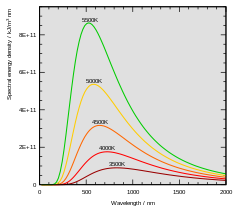








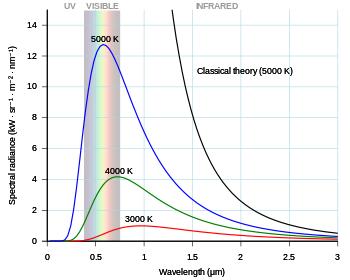
















![[{\hat {p}}_{i},{\hat {x}}_{j}]=-i\hbar \delta _{ij},](https://wikimedia.org/api/rest_v1/media/math/render/svg/a6de152aa445b7ca6653b9dd087ad604c2b8bf0e)




























